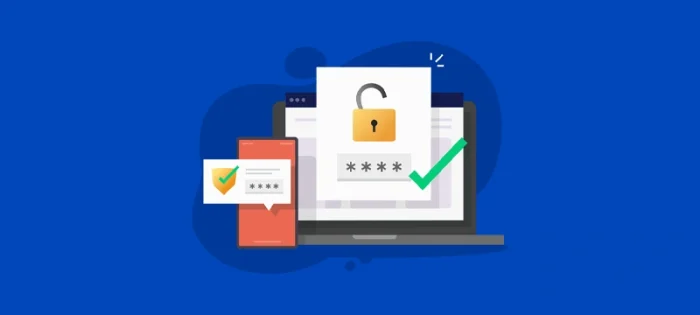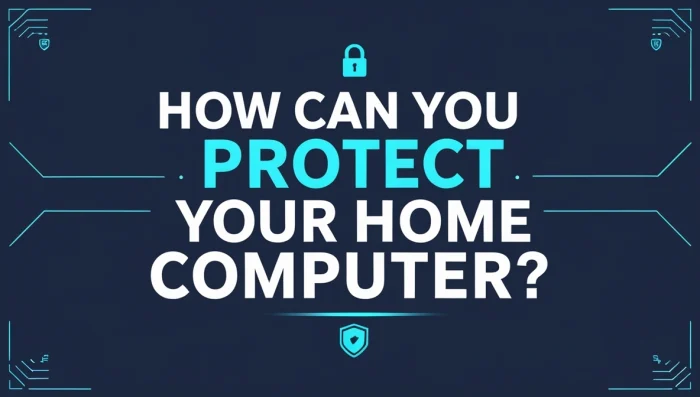In today’s digital world, your home computer is more than just a device—it’s a gateway to your work, personal life, finances, and memories. As cyber threats become increasingly sophisticated, learning how can you protect your home computer is no longer optional—it’s essential. Whether you’re working remotely, shopping online, or just browsing the internet, understanding how can you protect your home computer helps reduce vulnerabilities and strengthen defenses. The need for strong cyber awareness has never been more urgent.
Below, we walk you through key cybersecurity tips that will help you secure your computer, safeguard your data, and defend your digital presence. If you’re wondering how can you protect your home computer, read on for simple, actionable steps.

Content
Why Cybersecurity Is Critical for Your Home Computer
Unlike corporate networks, home computers often lack advanced security systems. This makes them prime targets for hackers looking to steal information, install malware, or gain unauthorized access. Protecting your home computer is about more than just installing antivirus software—it requires a proactive and layered approach. When considering how to protect your home computer, awareness and preparation are your strongest tools.
Common Threats Targeting Home Computers
Before diving into the solutions, it’s important to understand the most common cyber risks you face at home:
- Phishing emails: Fraudulent messages designed to trick you into clicking malicious links or sharing personal information.
- Ransomware: Malware that locks your files and demands payment for release.
- Spyware: Programs that secretly monitor your activity and steal sensitive data.
- Unsecured Wi-Fi: Open or weakly protected networks that expose your traffic to outsiders.
- Outdated software: Old systems and applications often have known vulnerabilities that attackers exploit.
Knowing these threats is key in understanding how can you protect your home computer from malicious intrusions.
How Can You Protect Your Home Computer: 10 Essential Steps
1. Install Reputable Antivirus Software
Your first line of defense should be robust antivirus software. It scans your files and blocks known threats.
- Choose a trusted provider like Bitdefender, Norton, or McAfee.
- Keep the software updated to detect the latest threats.
2. Keep Your Operating System and Software Updated
Hackers often exploit outdated software. Regular updates patch security holes and improve overall protection.
- Enable automatic updates for Windows, macOS, and essential applications.
- Don’t ignore software notifications—they matter.
3. Use Strong, Unique Passwords
Avoid reusing passwords across sites. Strong credentials reduce the risk of unauthorized access.
- Use a mix of letters, numbers, and special characters.
- Consider using a password manager like LastPass or 1Password.
4. Enable Two-Factor Authentication (2FA)
2FA adds an extra layer of security by requiring a second method of verification.

- Use authenticator apps like Google Authenticator or Microsoft Authenticator.
- Turn on 2FA for all important accounts, including email and banking.
5. Secure Your Home Wi-Fi Network
Your router is a gateway to all connected devices. Securing it is vital.
- Change the default router username and password.
- Use WPA3 encryption if available.
- Hide your network SSID from public view.
6. Avoid Clicking on Suspicious Links or Emails
Cybercriminals use phishing to lure you into unsafe actions. Stay cautious.
- Don’t open emails from unknown senders.
- Hover over links to preview URLs before clicking.
7. Back Up Your Data Regularly
If malware strikes, backups can save your personal and professional data.
- Use cloud services like Google Drive or OneDrive.
- Store important files on an external hard drive as a second layer.
8. Enable a Firewall
A firewall acts as a barrier between your computer and malicious internet traffic.
- Use the built-in firewall in your operating system.
- You can also install third-party firewalls for enhanced protection.
9. Be Cautious with Public Wi-Fi
Unsecured public networks are breeding grounds for cyberattacks.
- Avoid accessing sensitive data on public Wi-Fi.
- Use a Virtual Private Network (VPN) to encrypt your connection.
10. Create Multiple User Accounts
If multiple people use the same computer, create separate user profiles.
- Assign limited privileges to non-admin accounts.
- This limits the risk of unauthorized system changes or malware infections.
Cyber Awareness Is Your Best Defense
Cyber awareness is about staying alert and making smart digital choices every day. Knowing how can you protect your home computer empowers you to stop threats before they cause damage. You don’t need to be a cybersecurity expert to stay safe—just follow these foundational tips consistently.
If you manage a team or household, consider using a cyber-awareness platform to educate others and reinforce best practices. Strengthening your knowledge about how to protect your home computer can prevent data breaches, ransomware attacks, and costly repairs.
1. How to protect your home computer?
To protect your home computer, install reputable antivirus software, update your operating system regularly, use strong passwords, enable two-factor authentication, and secure your Wi-Fi network. Also, avoid clicking on suspicious links and back up your data frequently.
2. How can you protect your home computer answers?
You can protect your home computer by following cybersecurity best practices:
- Keep software up to date
- Use firewalls and antivirus
- Avoid phishing emails
- Use strong, unique passwords
- Back up your data regularly
3. How can you protect your home computer cyber awareness 25?
Cyber awareness 25 refers to a holistic approach to digital safety, including practices like secure browsing, avoiding suspicious downloads, using password managers, enabling encryption, limiting administrator access, and educating users about threats. The focus is on building habits that reinforce secure behavior.
4. How can we protect your computer system?
We can protect a computer system by implementing multiple layers of security:
- Regular updates and patches
- Firewalls and antivirus software
- Strong password policies
- User access controls
- Encrypted backups
Avoiding unsafe networks
Further Learn how a cell phone hacking app for your family security can enhance your digital protection strategy at home.
FAQs
How to protect your home computer?
To protect your home computer, start by installing reputable antivirus software, enabling a firewall, and keeping your system updated. Avoid clicking on suspicious links or downloading unknown files. Use strong, unique passwords for all accounts and enable two-factor authentication wherever possible. Regularly back up important data and ensure your Wi-Fi network is secured with encryption (WPA3 or WPA2).
How can you protect your home computer cyber awareness?
Cyber awareness involves being mindful of threats like phishing, malware, and identity theft. To improve protection through cyber awareness:
1- Recognize phishing emails and scams.
2- Avoid public Wi-Fi for sensitive transactions.
3- Log out of accounts after use.
4- Don’t reuse passwords across platforms.
Practicing cyber hygiene and staying informed about emerging threats are essential parts of keeping your home computer safe.
What is the best protection for your computer?
The best protection for your computer is a multi-layered security approach. This includes:
1- A trusted antivirus and anti-malware suite
2- A secure firewall
3- Strong password management tools
4- Regular system and software updates
5- Encrypted backups (local or cloud-based)
6- User awareness of online risks
Combining these tools and habits provides maximum defense against most cyber threats.
How can I protect my PC?
You can protect your PC by taking both technical and behavioral precautions. Use security software, avoid suspicious websites, and never install unverified applications. Regularly scan for viruses, update all programs, and secure your network. Educate yourself and family members on safe browsing practices to reduce risks of human error—often the weakest link in cybersecurity.

Joel Broussard is an avid blogger on technology, gadgets, and other topics that interest him. He likes to write about his personal experiences with the latest tech products as well as offer advice for people who are looking to buy a new device. When he is not blogging you can find him at home playing video games or watching anime.







